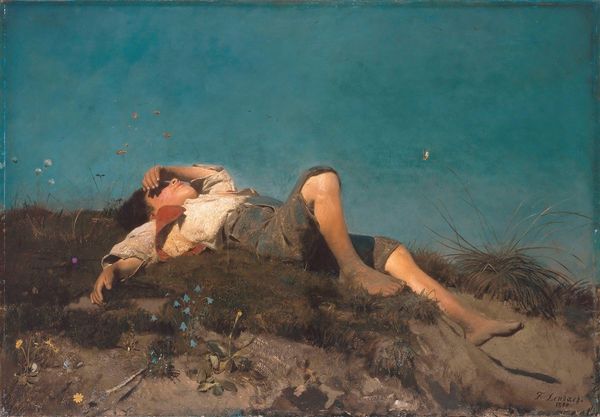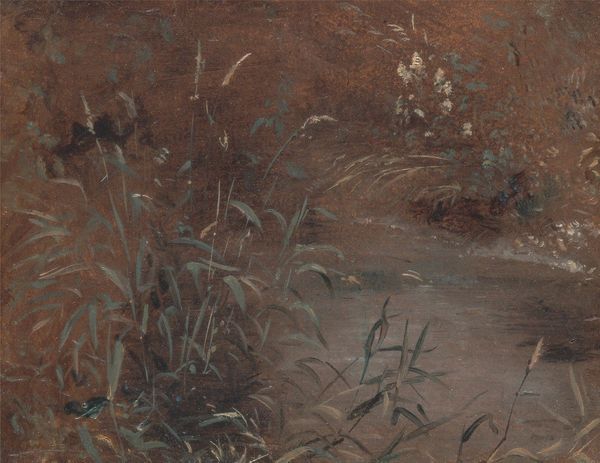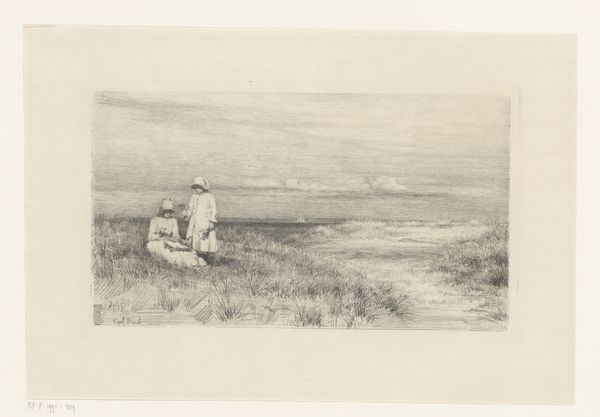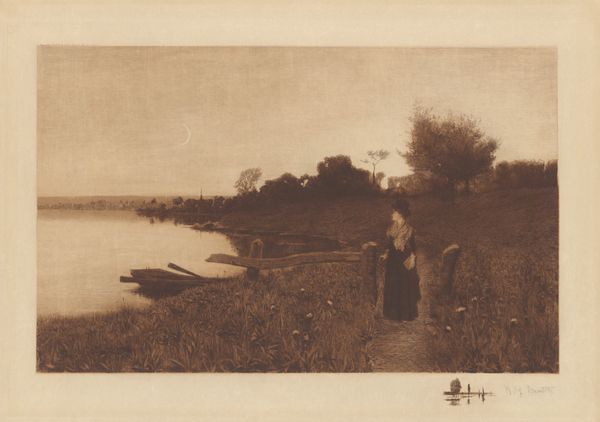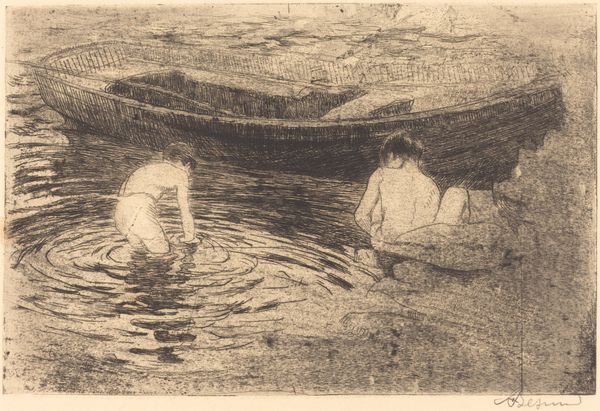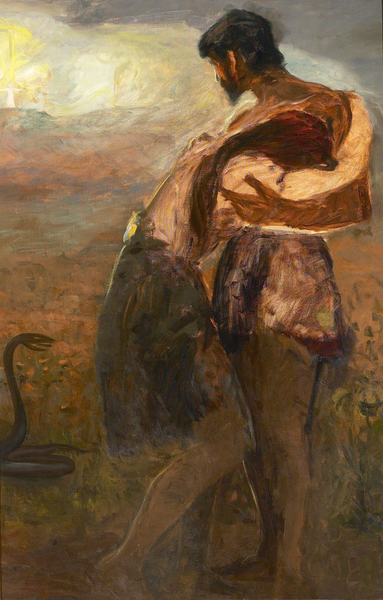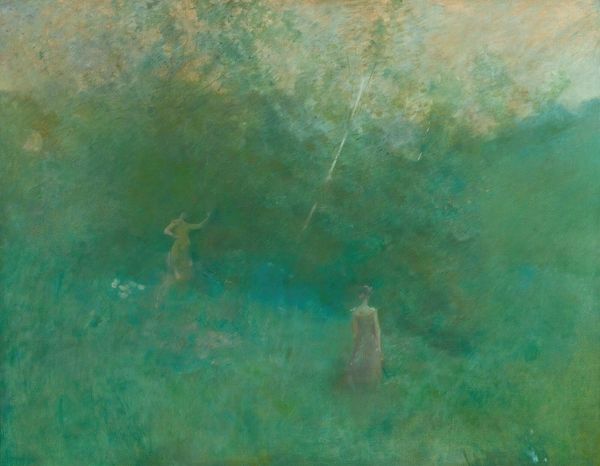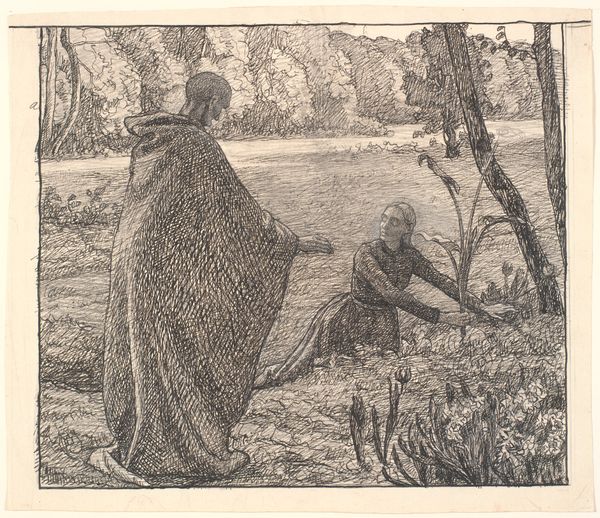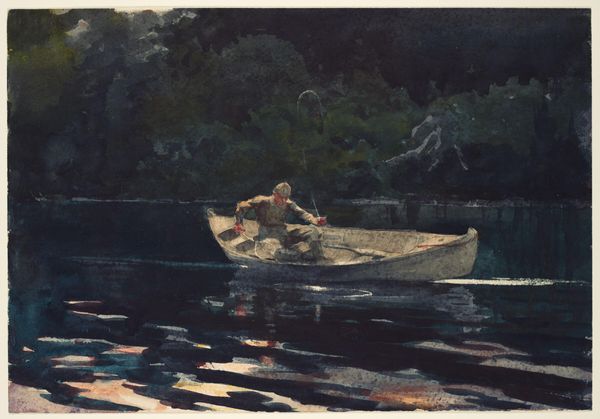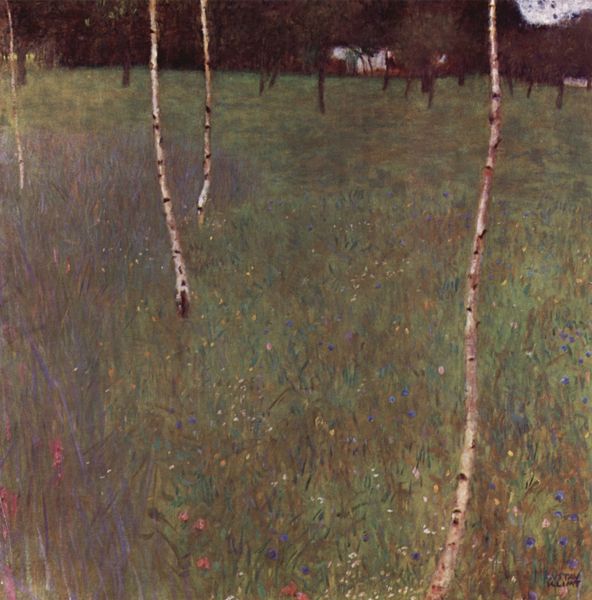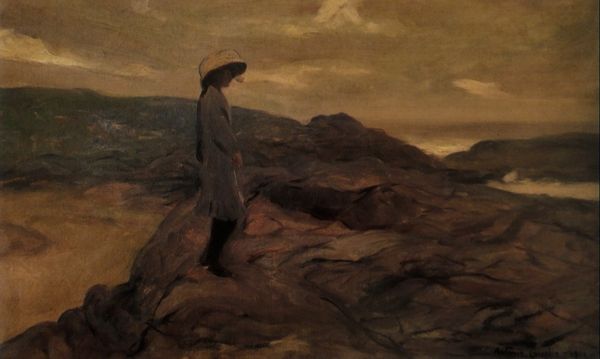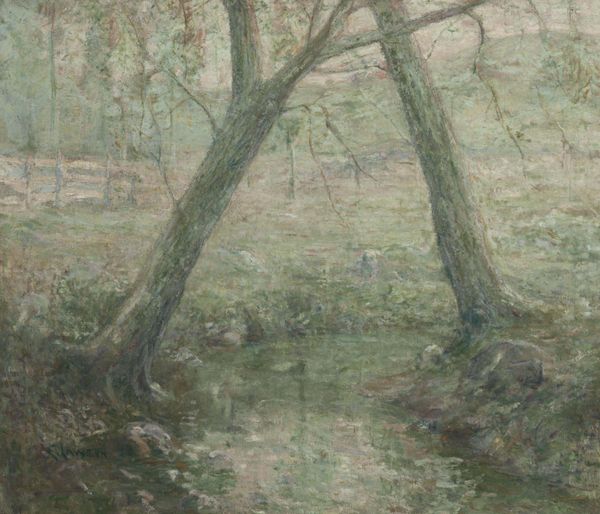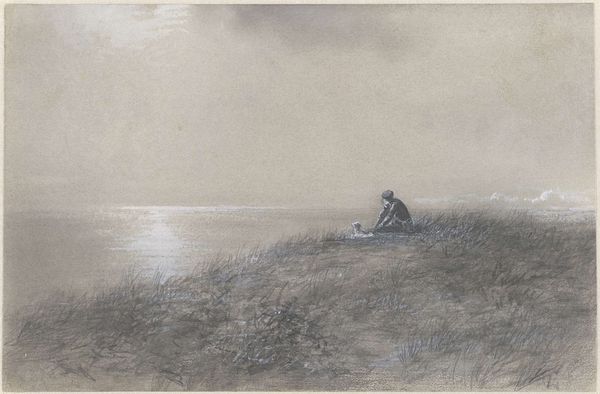
Copyright: Public domain
Editor: This is Theodor Severin Kittelsen's graphite drawing, "Me, me, me, me they will lead far away from the country," from 1900. It's a very evocative piece, mostly sepia-toned, and the figure seems very isolated in the landscape. What strikes you most when you look at it? Curator: Note the calculated distribution of tonal values; Kittelsen creates visual interest by contrasting the darker foreground with the paler sky reflected in the water. What purpose might that juxtaposition serve in the overall composition? Editor: Well, it definitely isolates the figure more. The darkness sort of traps them. But why draw attention away from the figure and toward the sky? Curator: Exactly. The tonal arrangement guides the eye to different areas of the artwork and underscores the psychological weight of the scene. By reducing chromatic information, Kittelsen forces us to concentrate on the stark contrast of dark and light. Also, the expressive use of line to render form: see how varied the mark-making is between the figure and the vegetation. Editor: So, you’re saying that he used formal elements like tone and line to create the sense of isolation and emotional weight, even more than, say, depicting the figure's face clearly? Curator: Precisely. Note too the title, which gives us some direction. "Me, me, me, me," repeated like that. In essence, the title, its graphical components and layout underscore a fundamental tension within the picture's formal structure. Do you see how it encourages various possible interpretations? Editor: That's fascinating, seeing how the basic elements of art can be so powerful in conveying emotion. It’s made me rethink how I look at drawings. Curator: Indeed, it reveals that artistic decisions related to color and line may lead us toward unexpected perspectives.
Comments
No comments
Be the first to comment and join the conversation on the ultimate creative platform.
